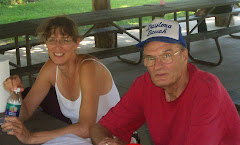In the past week or two, we've been watching a video series for school. Burt Wolf's What We Eat has 13 half-hour segments on food, how it's impacted history, science, culture, etc. Andrew complained a bit about some of the evolutionary mindset, but the political correctness isn't bad as PBS shows go.
The homeschool catalog in which I saw the video-series charged a mere $190 for the series. I obviously was going to the library! Only one copy existed in the statewide library catalog, but we were allowed to interlibrary loan it. However I saw today that Amazon carries the series for about $85, and Burt Wolf's website charges $25. For $25, the series is definitely worth it. This series reminds me somewhat of several of Richard Blunt's articles in Backwoods Home about food's impact on economies and history and cultures.
There was discussion in the series about how wheat and grapes were grown in the New World because of the Catholics' need for the Sacrament.
We learned how jam became popular after sugar's refinement became common. This happened about the same time as the Industrial Revolution. The women were working in the factory and were not home to prepare food for the children. Jam was something that did not require the wee children (home alone) to cook with fire or use knives. It also allowed the workers to have something that didn't take prep-work for dinner.
There was need in France at one point to decrease the peasants' dependence upon wheat as their most staple food. Potatoes were newly available after having been brought over from the Americas, but had not been well received. One scientist decided to plant a large plot of potatoes; he set plenty of guards around the field day and night. What was going on in the field was kept somewhat secret -- at least secret enough to develop interest among onlookers. When it was time to harvest the field, the peasants rushed in, stole as many potatoes as they could get their hands on, took them home, and planted them for themselves. And thus the peasants were enticed into treasuring a food that they had earlier rejected.
Peanuts were the food of the poor people. When the po-folks went to a show, they would, of course, take the cheap seats in the back or in the balcony and snack on peanuts. Thus the term "the peanut gallery."
When Columbus set sail, looking for the Spice Islands, one of the things he was sent to fetch was pepper -- black pepper, the spice. Instead, the natives introduced him to this plant-thing that had a hot flavor to it. He called it "pepper," so he had indeed found "pepper" for enhancing their food.
And these are just a few of the interesting bits gleaned from "What We Eat."
Friday, September 26, 2008
Subscribe to:
Post Comments (Atom)



Hi Susan,
ReplyDeleteI finally got a chance to watch Charade a few nights ago. I think you recommended it a few months ago!
Just now I found the video series _What We Eat_ at University of Cincinnati. It is on its way to me via inter-library loan too. You give so many excellent suggestions. I'm looking forward to watching this with the kids.